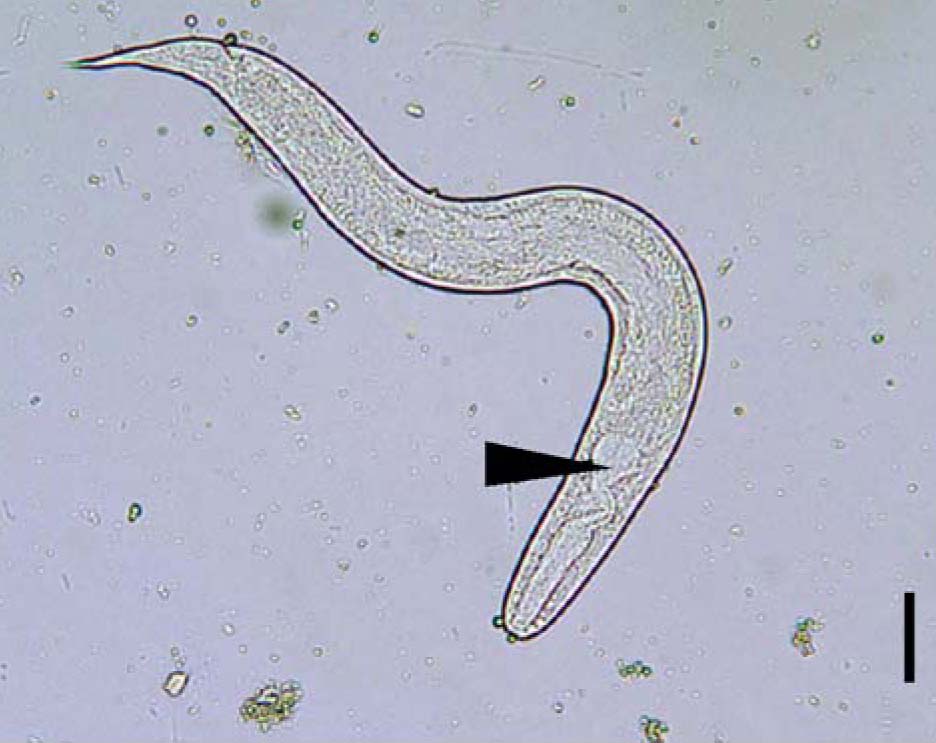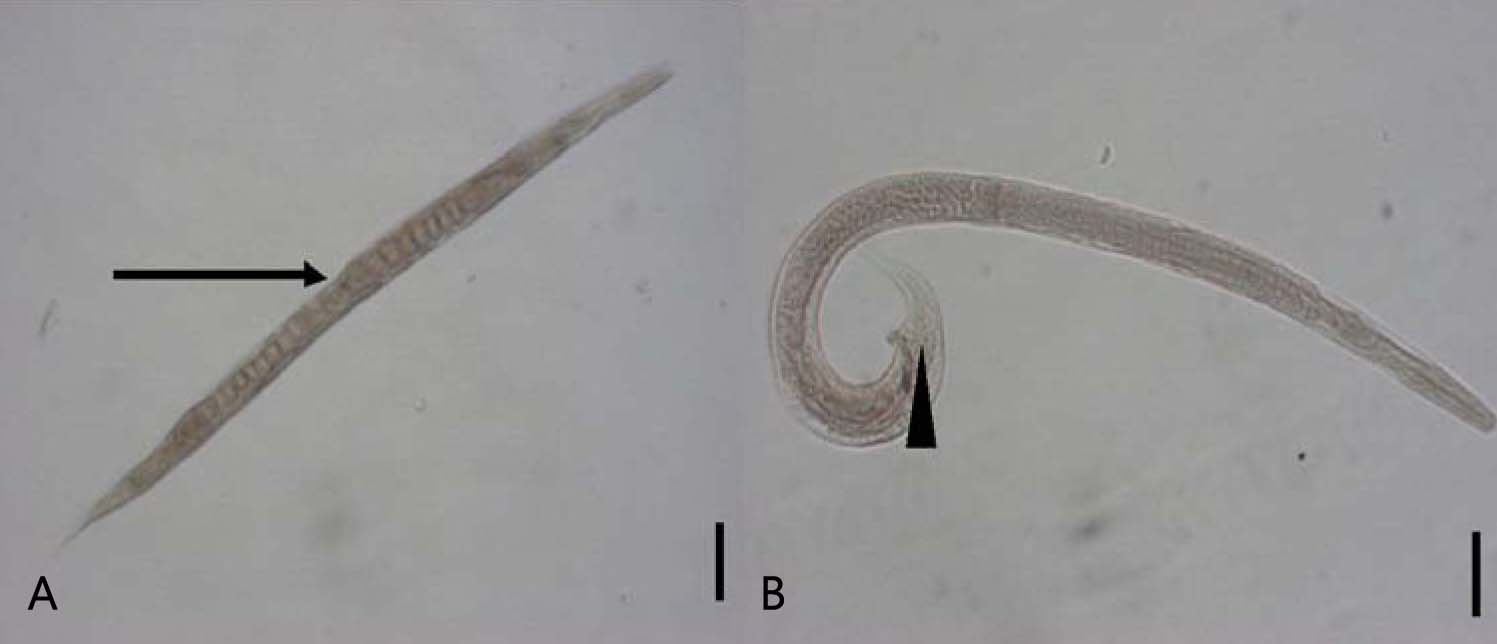Infect Chemother.
2009 Apr;41(2):105-108. 10.3947/ic.2009.41.2.105.
Observation of the Free-living Adults of Strongyloides stercoralis from a Human Stool in Korea
- Affiliations
-
- 1Department of Laboratory Medicine, Dankook University Hospital, Cheonan, Korea.
- 2Department of Laboratory Medicine, Dankook University College of Medicine, Cheonan, Korea.
- 3Department of Internal Medicine, Dankook University College of Medicine, Cheonan, Korea.
- 4Department of Parasitology and Tropical Medicine, Seoul National University College of Medicine and Institute of Endemic Diseases, Seoul National University Medical Research Center, Seoul, Korea.
- 5Department of Parasitology, Korea University College of Medicine, Seoul, Korea.
- 6Department of Medical Engineering, Dankook University College of Medicine, Cheonan, Korea.
- 7Department of Parasitology, Dankook University College of Medicine, Cheonan, Korea. bbbenji@freechal.com
- KMID: 2170259
- DOI: http://doi.org/10.3947/ic.2009.41.2.105
Abstract
- A 76-year-old Korean man living in Cheonan, Chungcheongnam-do, visited one University Hospital with dyspnea and abdominal pain. He has been undergoing transcatheter arterial chemoembolization (TACE) for the past three years for the treatment of hepatocellular carcinoma. Abdominal pain developed 10 days ago, and became worse several days prior to coming to the emergency room. Physical examination revealed tenderness over the umbilicus. Eosinophil count was 22% without increase in the number of white blood cells. Stool examination showed adult and larval nematodes, which were subsequently identified as free-living adult worms and rhabditiform larvae of Strongyloides stercoralis. Follow-up stool examination performed six days later demonstrated only rhabditiform larvae of S. stercoralis. This is the first report on the recovery of free- living adult worms from human stool in the world.
Keyword
MeSH Terms
Figure
Cited by 1 articles
-
A Case of Chronic Strongyloidiasis with Recurrent Hyperinfection
Kuenyoul Park, Min-Sun Kim, Jeonghyun Chang, Eo Jin Kim, Changhoon Yoo, Min Jae Kim, Heungsup Sung, Mi-Na Kim
Lab Med Online. 2019;9(3):171-176. doi: 10.3343/lmo.2019.9.3.171.
Reference
-
1. Grove DI. Human strongyloidiasis. Adv Parasitol. 1996. 38:251–309.
Article2. Schad GA. Grove DI, editor. Morphology and life history of Strongyloides stercoralis. Strongyloidiasis: a major round-worm infection of man. 1989. London: Taylor and Francis;85.3. Hira PR, Patel BG. Human strongyloidiasis due to the primate species Strongyloides fülleborni. Trop Geogr Med. 1980. 32:23–29.4. Ha WC, Lee YH, Ha GY, An MH. A case of severe strongyloidiasis in a patient with chronic obstructive pulmonary diasease receiving long-term steroid therapy. Infect Chemother. 2008. 40:276–280.
Article5. Beaver PC, Jung RC, Cupp EW. Clinical Parasitology. 1984. 9th ed. Philadelphia: Lea & Febiger;263.6. Lee WK, Choi WY, Lee OR. Rhabditis elongata Schneider, 1866 from students in Korea. Korean J Parasitol. 1978. 16:113–116.
Article7. Ahn YK, Chung PR, Lee KT. Rhabditis sp. infected cases in rural school children. Korean J Parasitol. 1985. 23:1–6.
Article8. Lok JB. Strongyloides stercoralis: a model for translational research on parasitic nematode biology. WormBook 2007. 1–18. Availalble from:URL: http://www.wormbook.org.9. Nolan TJ, Brenes M, Ashton FT, Zhu X, Forbes WM, Boston R, Schad GA. The amphidial neuron pair ALD controls the temperature-sensitive choice of alternative developmental pathways in the parasitic nematode, Strongyloides stercoralis. Parasitology. 2004. 129:753–759.
Article
- Full Text Links
- Actions
-
Cited
- CITED
-
- Close
- Share
- Similar articles
-
- A case of Strongyloides stercoralis infection
- A case of Strongyloides stercoralis infection with severe eosinophilia
- A Case of Strongyloides Stercoralis Infection of Stomach in Association with Meningitis
- Strongyloides Hyperinfection in an Elderly Patient Treated for Stomach Cancer
- A case of disseminated strongyloidiasis diagnosed by worms in the urinary sediment




